Part of a series of articles titled The History of Slavery in St. Louis.
Previous: Resisting Slavery
Article
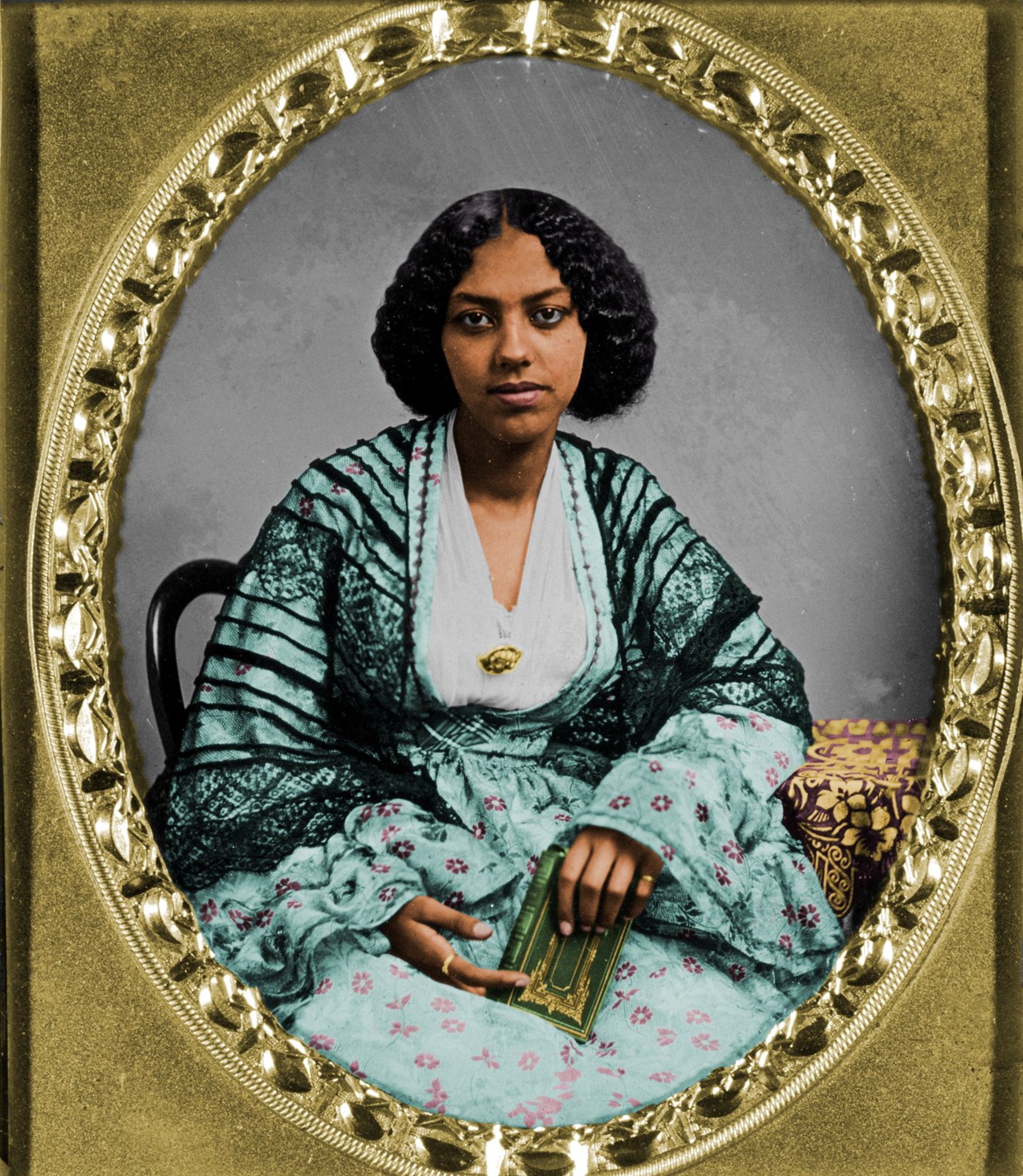
Missouri Historical Society, colorized by Nick Sacco/History Beyond Black and White
Missouri state laws assumed that Black residents were enslaved unless proven otherwise. Between 1,500 and 2,100 free Black residents lived in St. Louis in 1860 and were required to possess a license proving their freedom. This small community faced terrible oppression that often blurred the lines between slavery and freedom.
Free Black residents could not possess a firearm, testify in court, or receive a formal education. Free Black residents also faced evening curfews. A St. Louis city ordinance stated that free Blacks could not be out between 10PM and 4AM without a pass and could not hold night meetings without permission from the mayor. Any large gathering of free Black residents without the mayor’s approval was to be broken up and participants fined $5. If free Blacks broke any law, they faced the possibility of imprisonment at “Lynch’s Slave Pen.”
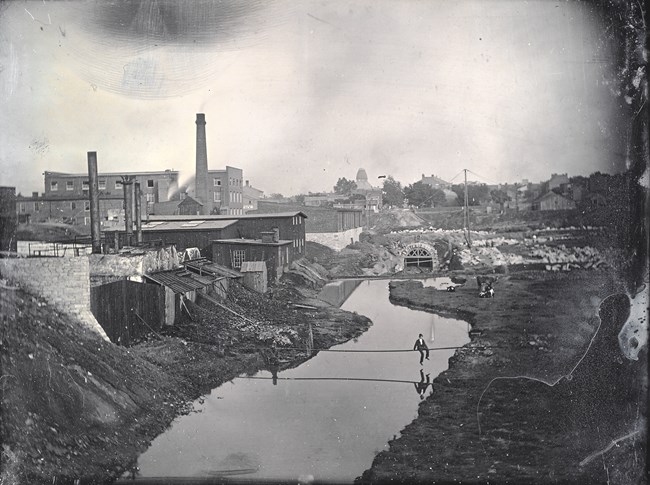
Missouri Historical Society
Sometimes they faced even worse consequences. Francis McIntosh was a mixed race (often referred to as “mulatto” in the nineteenth century) steamboat cook from Pennsylvania. While traveling through St. Louis in April 1836, McIntosh was accused of murdering a police officer. Believing that McIntosh was not deserving of a trial in court, an angry mob tied him to a tree and burned him to death at what is today Kiener Plaza.
Nobody was punished for this lynching.
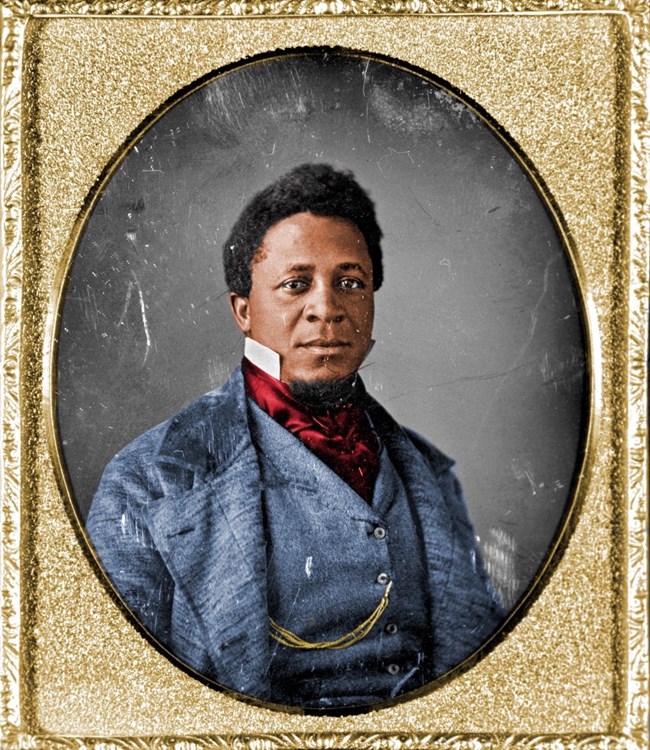
Missouri Historical Society, colorized by Nick Sacco/History Beyond Black and White
Bob Wilkinson (c.1813–1879) was a prosperous barber and free Black resident of St. Louis. Originally from Pennsylvania, Wilkinson moved to St. Louis in the mid-1830s and originally sold soap and other toiletries. In 1848 he established a barbershop at 38 Vine Street. Within two years Wilkinson’s property was worth $8,000 and he was running a successful business. An advertisement for Wilkinson stated that he specialized in shaving, “Fashionable Hair Cutting,” and “particular attention . . . [is made] to the cutting of children’s hair.”
Wilkinson was hired to work at the Southern Hotel at 4th and Walnut streets in 1866, one year after the Civil War ended. The Southern Hotel was the most luxurious hotel in St. Louis, and it made Wilkinson very wealthy. A feature in the New York Tribune in 1871 noted that Wilkinson had a personal fortune of $25,000. He was married twice, was a father to fourteen children, and is buried at Calvary Cemetery in North St. Louis.
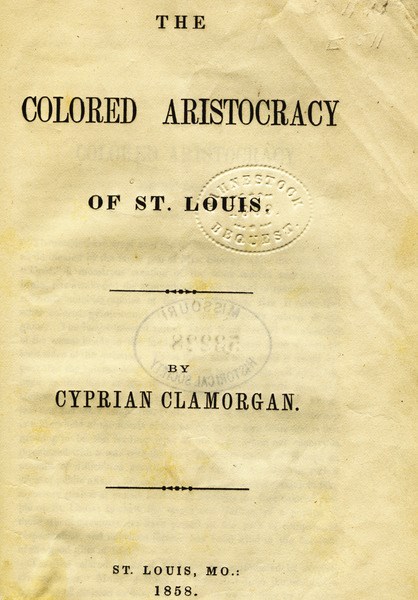
Washington University St. Louis
Despite persistent racism and restricted rights, some free Blacks residents became wealthy and well-respected in the city. Several barbers, including Albert White, William Johnson, and James Thomas each had a personal wealth between $15,000 and $125,000 in the 1850s. Antoine Labadie, a cattle dealer, owned a business worth $300,000. Pelagie Nash became wealthy by investing in real estate. One source claimed that she owned nearly all the homes on her block.
In 1858, a mixed-race resident named Cyprian Clamorgan documented the lives of the city’s most prominent free Blacks in a book entitled The Colored Aristocracy. Clamorgan wrote short biographies of forty-four Free Black residents and documented their contributions to the city. The book remains an important source for historians studying the history of St. Louis today.
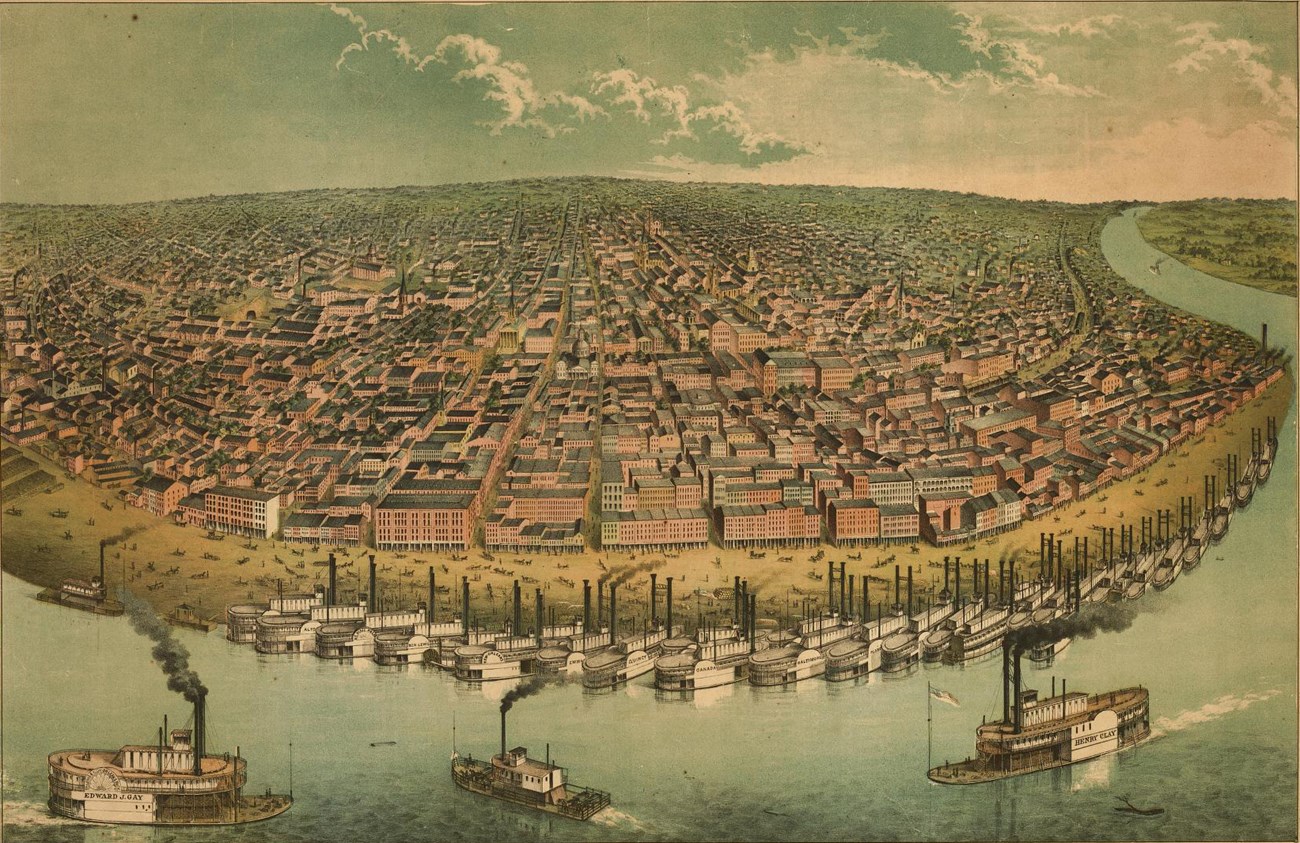
Library of Congress
Part of a series of articles titled The History of Slavery in St. Louis.
Previous: Resisting Slavery
Last updated: November 2, 2023